Author: Paul Amico
I love fruit, though when it comes to beer, I typically prefer those where the fruity characteristics are imparted by standard ingredients, namely hops and yeast. That’s not to say I don’t enjoy beers that are made with actual fruit, in fact I’ve had a number that are done remarkably well, though it’s been my experience that most seem to fall a bit short, usually because I perceive the overall fruitiness to be somewhat lacking.
Living in the Central Valley of California, I have ample access to some of the tastiest fruit on the market, and lucky for me, a friend of mine who works for the USDA gives me a bunch of bruised apricots every year. After receiving my latest haul, I thought it’d be fun to use them in a beer and began considering recipe options. Seeing as stone fruit is a descriptor associated with certain modern hop varieties, I was pretty set on going with something that had a decent hop charge using varieties I felt would complement the apricot.
Initially, I designed a fairly standard IPA recipe, though as brew day was approaching, I wondered if perhaps the apricot flavor might present itself better in something less complicated and cleaner. Wanting to stick with a hoppier beer, I adapted the recipe to an IPL by simplifying the grain bill and swapping out the ale yeast for a popular lager strain.
| Making Curse The Stone Apricot IPL |
In addition to a simple grain bill, I went with Azacca and Medusa hops for this recipe because both are said to contribute stone fruit character to beer.
Curse The Stone Apricot IPL
Recipe Details
| Batch Size | Boil Time | IBU | SRM | Est. OG | Est. FG | ABV |
|---|---|---|---|---|---|---|
| 5.5 gal | 60 min | 79.4 | 7.7 SRM | 1.07 | 1.012 | 7.61 % |
| Actuals | 1.07 | 1.012 | 7.61 % | |||
Fermentables
| Name | Amount | % |
|---|---|---|
| Lamonta: Pale American Barley Malt | 12 lbs | 69.57 |
| Vanora: Vienna-style Barley Malt | 3 lbs | 17.39 |
| Apricot (Fruit) | 2.25 lbs | 13.04 |
Hops
| Name | Amount | Time | Use | Form | Alpha % |
|---|---|---|---|---|---|
| Azacca | 16 g | 0 min | First Wort | Pellet | 13 |
| Azacca | 16 g | 30 min | Boil | Pellet | 13 |
| Azacca | 24 g | 15 min | Boil | Pellet | 13 |
| Medusa | 56 g | 2 min | Boil | Pellet | 3 |
| Azacca | 28 g | 10 min | Aroma | Pellet | 13 |
| Medusa | 56 g | 4 days | Dry Hop | Pellet | 3 |
Yeast
| Name | Lab | Attenuation | Temperature |
|---|---|---|---|
| Global (L13) | Imperial Yeast | 77% | 32°F - 32°F |
Notes
| Water Profile: Ca 92 | Mg 1 | Na 10 | SO4 153 | Cl 50 |
Download
| Download this recipe's BeerXML file |
A couple weeks prior to brewing, I cut up the apricots and removed the pits before placing the fruit in a zipper bag that was stored in my freezer.
I started my brew day by collecting the full volume of filtered water, adjusting it to my desired profile, and getting it heating up before weighing out and milling the grain.
With the water appropriately heated, I incorporated the grains and set the controller to maintain my target mash temperature, at which point I prepared the kettle hop additions.
When the mash step was complete, I lifted the grain basket out of the kettle then turned the element on full power.
Following the 60 minute boil, I quickly chilled the wort with my CFC while transferring it to a sanitized Brew Bucket.
A refractometer reading showed the wort was at a respectable 1.068 OG, which the apricot addition would effectively increase to 1.070 OG. After placing the filled fermenter in my chamber to finish chilling to my desired fermentation temperature of 65°F/18°C, I used leftover wort to make a vitality start with a pouch of Imperial Yeast L13 Global.
I returned to pitch the yeast 4 hours later and let it ferment for a week before taking a hydrometer measurement showing it was at 1.012 SG.
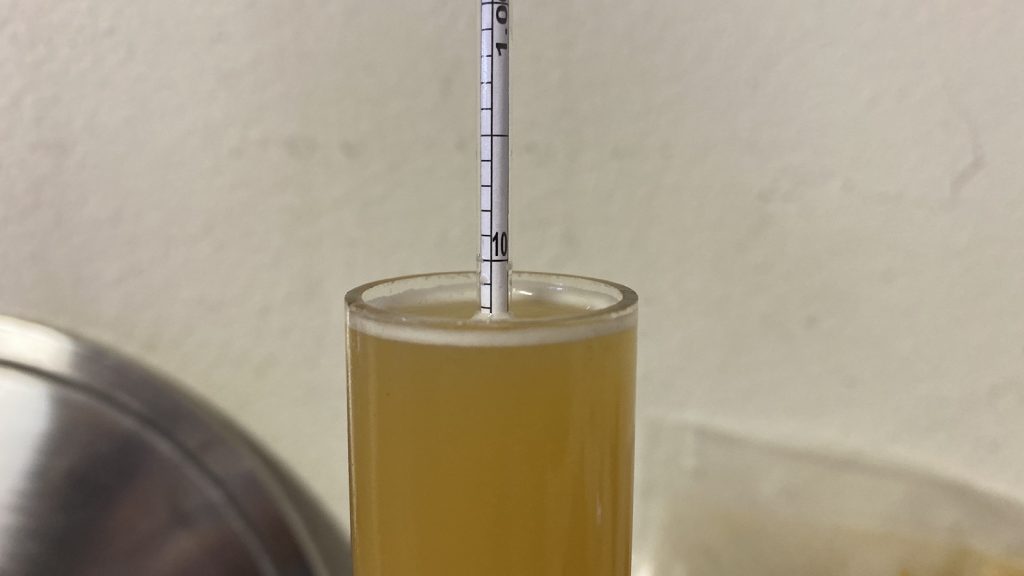
At this point, I added the thawed apricots to the beer.
Following another 2 weeks, no signs of activity were present, so I proceeded with racking the beer to a CO2 purged keg.
The filled keg was placed in my keezer and left to condition for 3 weeks before I began serving it.
| IMPRESSIONS |
As a brewer whose experience with fruited beers has been iffy at best, I was cautiously hopeful about this batch of Curse The Stone. Since I wanted the fruit to be the star of the show, I went with a simple grain bill of just pale and Vienna malts, opted for hop varieties known for imparting stone fruit character, and fermented it with a clean lager yeast.
I’m happy to report that I absolutely loved this beer! The apricot flavor was not only obviously present, but it was distinct enough from the hop character that it didn’t come across as muddled, and it worked beautifully with the slight funky note I get from Medusa. I’ve yet to make this recipe with an ale yeast, so all I can do is presume, but I really feel the clean fermentation from the lager yeast allowed the fruit flavor to take center stage.
In sharing Curse The Stone with friends, the feedback was also very positive. While nearly everyone commented on the apricot aroma and flavor, some complimented the way it melded with the malt character to create the impression of jam on toast. While this beer was delicious, I’d be curious to swap the pale malt for a lighter Pilsner malt, and I definitely plan to use this recipe as a base for playing with fruit additions in the future.
If you have thoughts about this recipe or experience making something similar, please feel free to share in the comments section below!
Support Brülosophy In Style!
All designs are available in various colors and sizes on Amazon!
Follow Brülosophy on:
FACEBOOK | TWITTER | INSTAGRAM
If you enjoy this stuff and feel compelled to support Brulosophy.com, please check out the Support page for details on how you can very easily do so. Thanks!


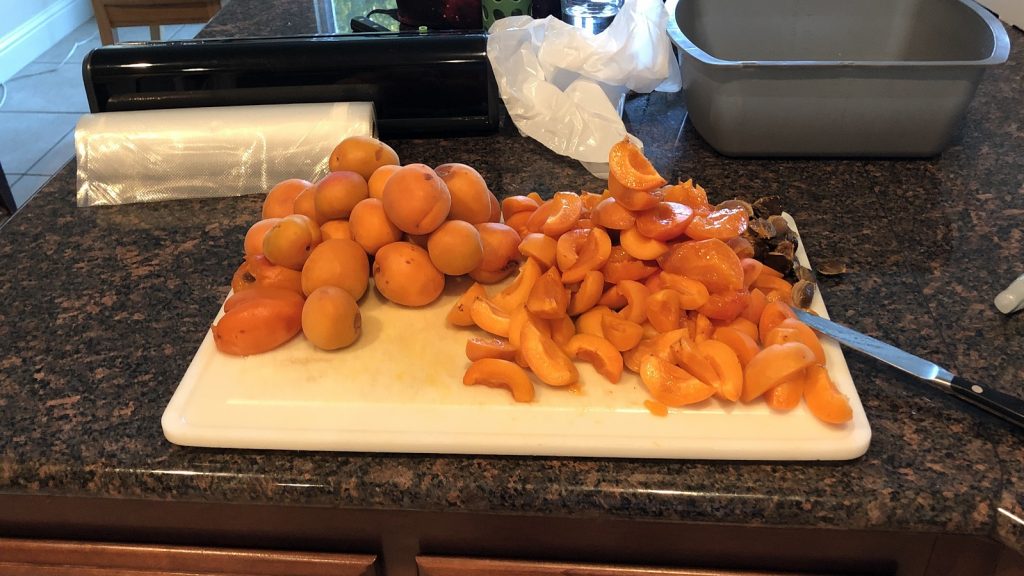
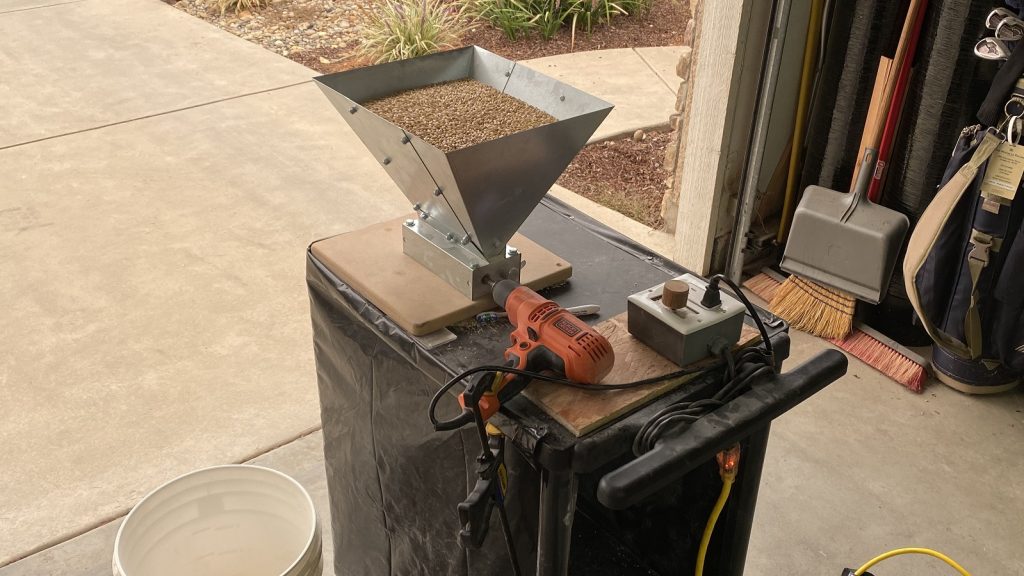
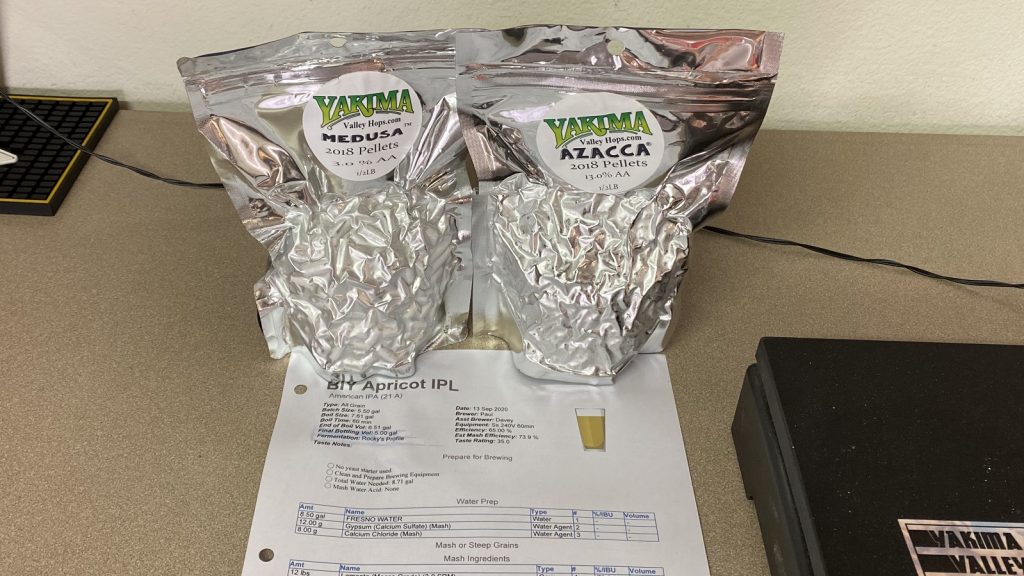
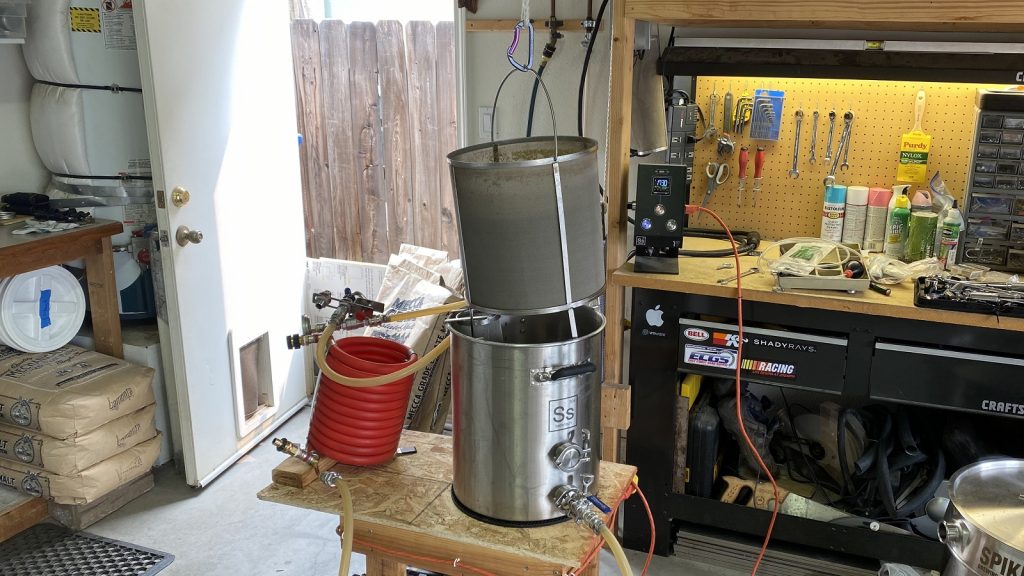
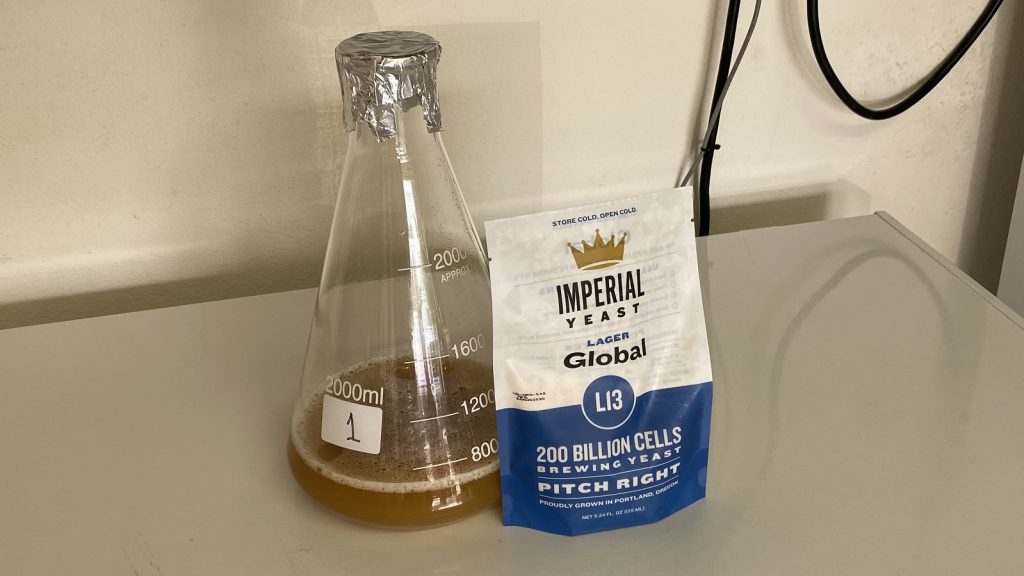
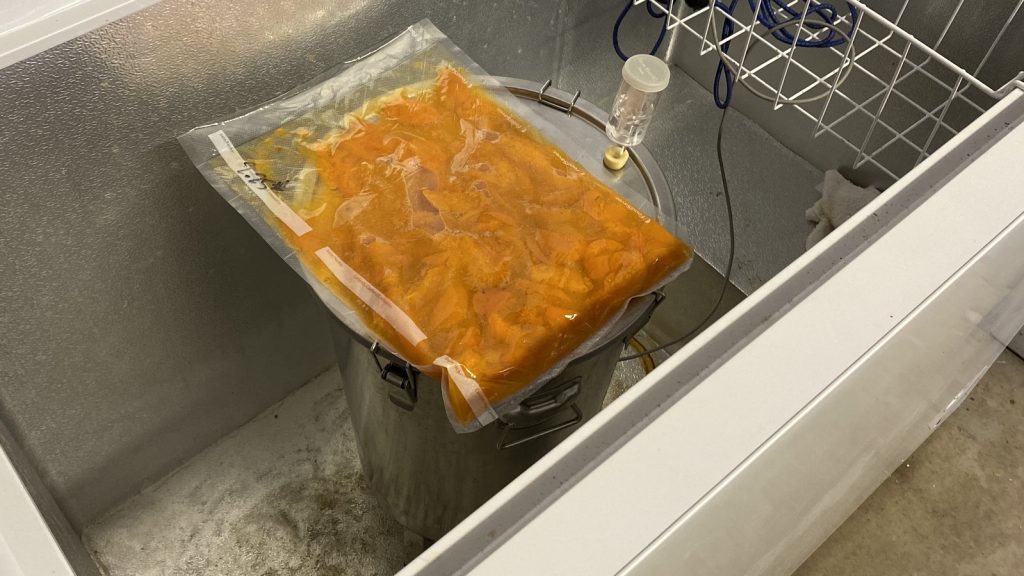
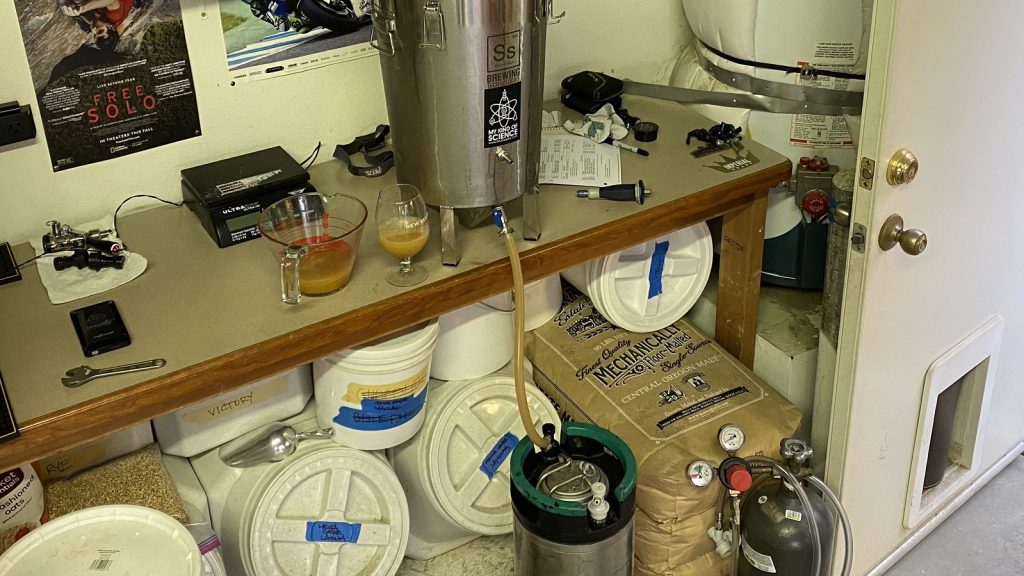
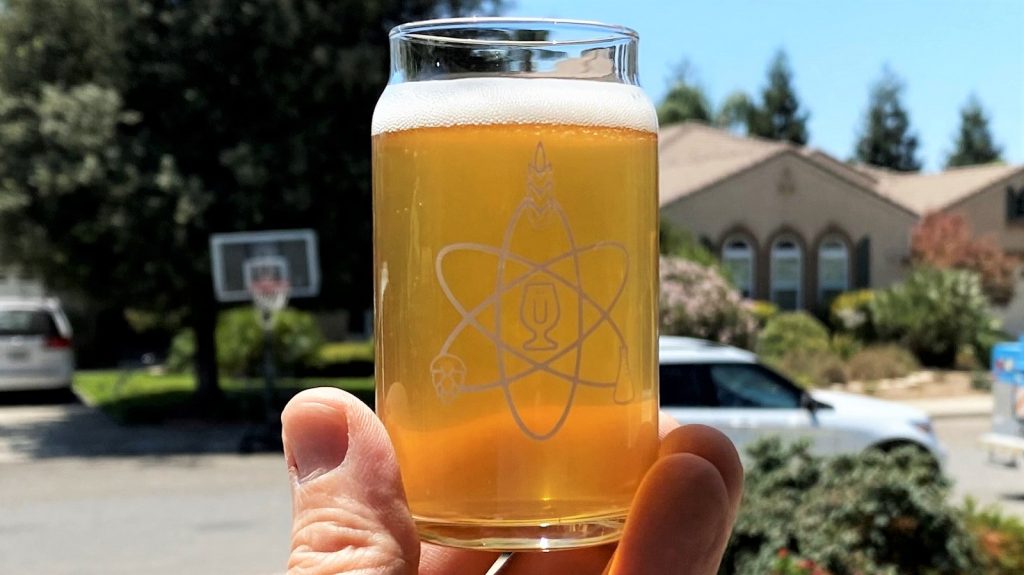






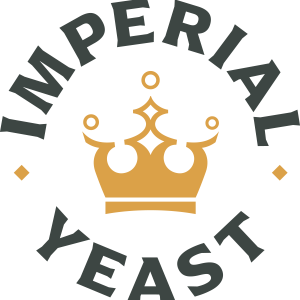




7 thoughts on “Brü It Yourself | Curse The Stone Apricot IPL”
Sounds like a good beer!
I am wondering- how did you calculate the increase in gravity that the apricot would contribute (+0.002)?
I don’t recall, actually. I think I googled it! Or looked it up in BrewFather or BeerSmith.
How did you add the fruit, did you use anything to contain it (bag, stainless cylinder)? Seems like fruit is bad about leaving particles in a beer.
I pureed it using a Vitamix, and then just added it to the fermenter. I cold crashed the beer in the fermenter before transfer, which helped. But the initial pours after kegging had some floaters, but that all passed pretty quickly. You can see that it never really cleared up but I don’t get too spun up about stuff like that, because the batch didn’t last long!
What would you think of using a pectinase enzyme to help clear things up in the future? Did you consider leaving the pit in with the fruit?
Looks like a good tasting beer; well done. As regards the final strength of the beer, there is a question mark in my mind, I think it would have been helpful to take another hydrometer (or corrected refractometer) reading after the final fermentation with the apricots, before transferring into keg. Either that, or include the fruit in the initial fermentation, for simplicity.
It surprised me that raw fruit was used. Is there not a concern with wild yeast and other random yukies? I would be tempted to pasteurize the apricots. I have a bunch of frozen BC plums in the freezer, so thanks for the idea. I have never used either of those hops so looking forward to my own experiment.